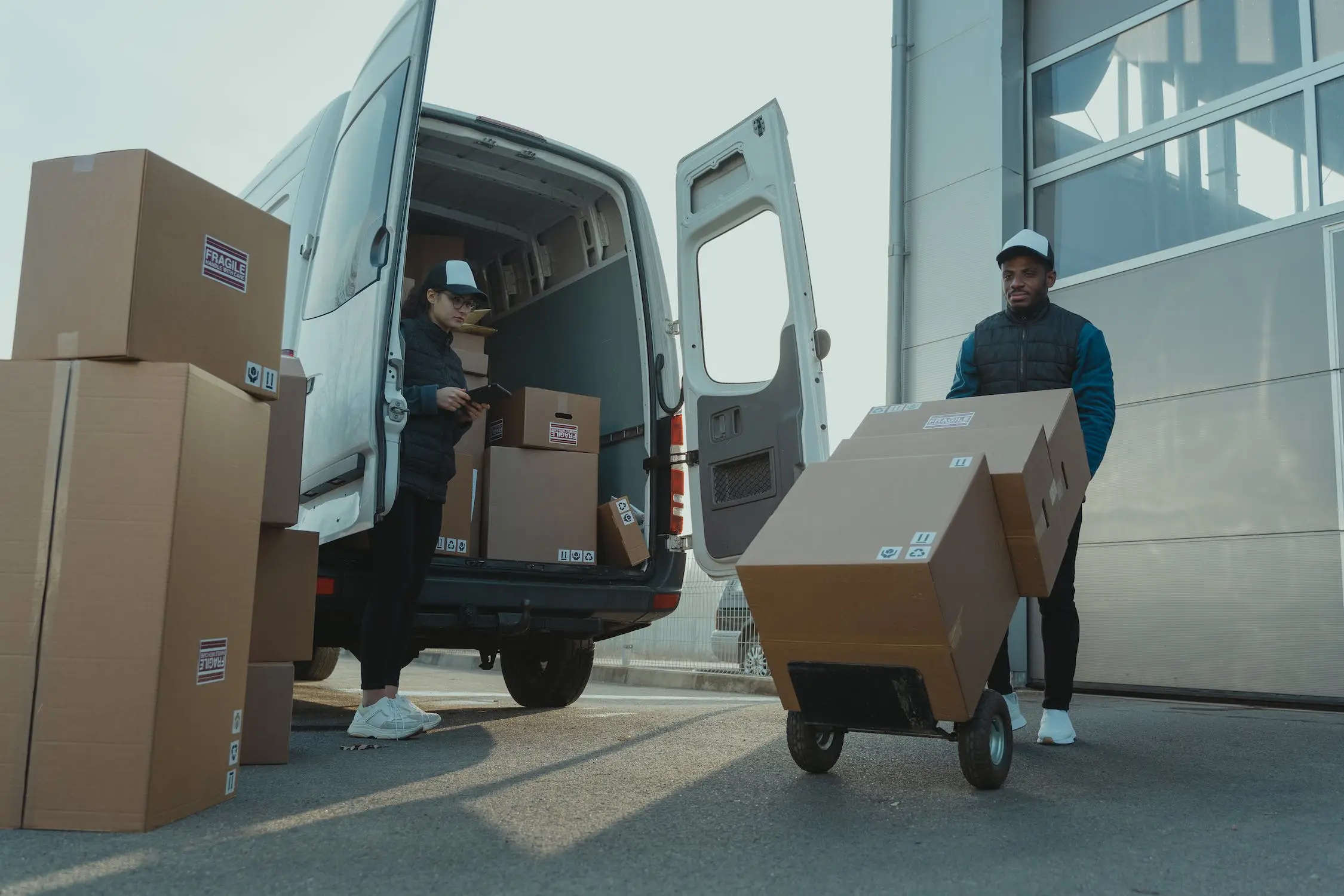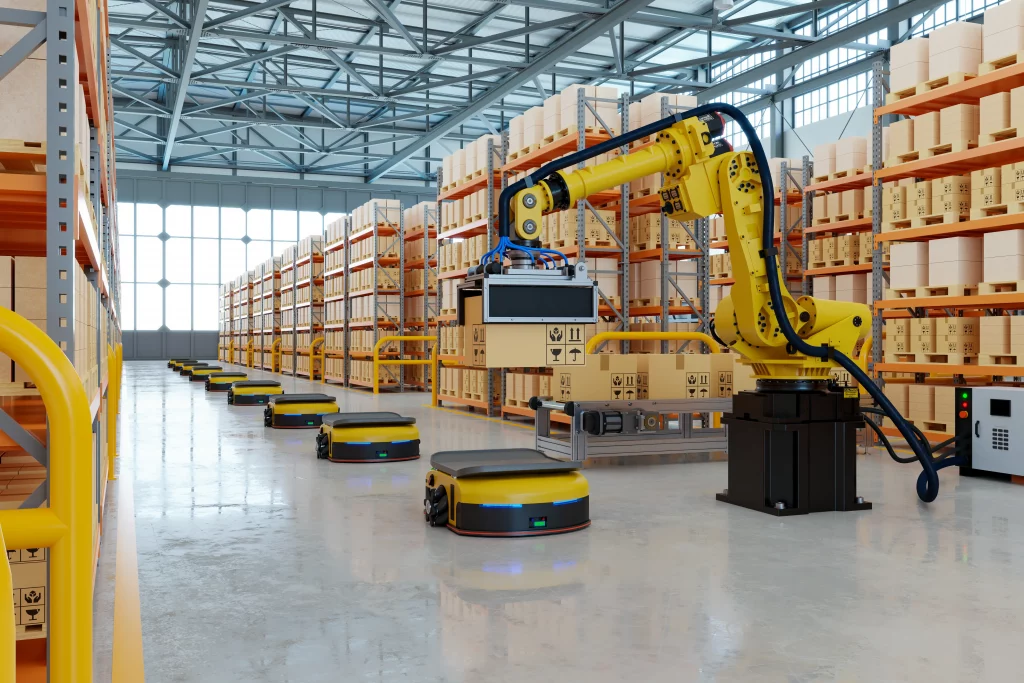Have you ever wondered how your online order reaches your doorstep so swiftly, or how businesses manage to deliver products accurately even across borders?
In the ecommerce sector, ensuring an exceptional customer experience isn’t just about moving products from one location to another. It relies on coordinated efforts, real-time decision-making, and meticulous planning.
The linchpin behind this efficient operation? Integrated logistics solutions.
With the digital marketplace’s continuous evolution and the rising popularity of services like cash on delivery in Europe, understanding the integral role of integrated logistics is crucial.
Curious about its profound impact? Read on to delve deeper into the importance of integrated logistics in our interconnected ecommerce world!

What is Integrated Logistics?
Integrated logistics refers to the coordinated and synchronized management of various logistics activities to ensure a seamless end-to-end process. Historically, logistics functions operated in silos, each focusing on its specific task. Over time, the need for a more cohesive and unified approach arose, leading to the evolution of integrated logistics.
Compared to traditional logistics, which may handle functions separately (like transportation, warehousing, and distribution), integrated logistics seeks to optimize the entire supply chain as a unified system. This holistic approach ensures that all components work in harmony, resulting in enhanced efficiency and reduced redundancies.
The Birth of Integrated Logistics
As businesses began to adopt an omnichannel approach – which means offering a unified customer experience across various sales channels, be it online, mobile, or in physical stores – they encountered new challenges.
This approach, while advantageous for reaching a broader audience, required ensuring consistent and efficient operations across all platforms. Alongside this, customers began to set higher standards, expecting not just seamless shopping experiences but also faster order fulfillment.
The demand for deliveries within a mere 24 hours started becoming the norm. To meet these intricate demands brought about by the omnichannel model, the logistics sector had to evolve, leading to the conception and adoption of integrated logistics. This new system aimed to enhance and expedite the entire supply chain process.
Advantages of Integrated Logistics
Here are the key benefits integrated logistics brings to businesses and their operations:
Operational Efficiency
Operational efficiency, when achieved through integrated logistics, results in a streamlined synchronization of various tasks and enhanced inter-departmental collaboration. The benefits of this efficiency are manifold:
- Unified Management: All logistical functions consolidate under one umbrella for smoother management.
- Reduced Bottlenecks: With a streamlined approach, redundancies and bottlenecks become things of the past.
- Information Synchronization: Departments like procurement and inventory share real-time data, leading to informed decisions.
- Swift Decision-Making: Real-time data ensures that decisions are made quickly, keeping the supply chain agile.
- Resource Optimization: Resources, whether human or machinery, are utilized to their fullest potential.
Cost Reduction
By integrating logistics, businesses can pinpoint and cut down expenses throughout the supply chain, resulting in notable savings. Key areas of cost savings include:
- Procurement Efficiency: Smart purchasing decisions minimize the risk of overstocking or running out of stock.
- Shipping Benefits: Optimized routes lead to fuel savings and improved carrier negotiations.
- Warehouse Management: Efficient practices result in reduced holding costs and decreased wastage.
- Delivery Accuracy: Fast and precise order processing cuts down last-mile delivery expenses.
- Fewer Returns: With more accurate deliveries, the incidence of returns diminishes.
Enhanced Customer Service
Integrated logistics is a cornerstone for impeccable customer service. It ensures that businesses not only meet but often exceed customer expectations. This level of service is evident through:
- Timely Deliveries: Customers trust businesses that deliver on time, every time.
- Minimized Errors: Fewer mistakes mean happy customers and reduced returns.
- Seamless Shopping Experience: Offering a consistent service regardless of the shopping channel.
- Tracking Transparency: Providing real-time tracking ensures customers are always in the loop.
- Building Trust: Especially in cash on delivery models, timely and accurate service solidifies customer trust.
Flexibility and Resilience
In the face of disruptions, the true test of a logistics system is its ability to adapt and continue operations seamlessly. Integrated logistics shines in this respect, offering:
- Full Visibility: A clear view across the supply chain ensures timely identification of potential challenges.
- Adaptive Rerouting: During disruptions, the system can swiftly redirect shipments.
- Proactive Planning: With foresight into potential challenges, contingency plans are always ready to deploy.
- Resource Redeployment: Swiftly moving resources to where they’re needed most keeps operations smooth.
- Consistent Delivery: Even when external challenges arise, integrated logistics ensures unwavering delivery promises.

Key Components of Integrated Logistics
Let’s explore the core components that form the backbone of integrated logistics.
Procurement and Material Management
At its core, procurement is about obtaining goods and services most efficiently, while material management ensures the right stock is available for production. A closer look reveals:
- Efficient Production Planning: Predicting and preparing for future needs.
- Strategic Sourcing: Picking the best suppliers based on multiple criteria.
- Optimization: Continuously refining processes for enhanced results.
Inventory and Warehouse Management
Balancing inventory means having just the right amount of stock, while warehouse management focuses on storing that stock smartly. Key facets include:
- Strategic Inventory Placement: Storing stock where it’s most needed.
- Technology Utilization: Using systems to track and reorder stock automatically.
- Cost Efficiency: Striking the balance between stock levels and cost.
Distribution Management
Distribution is the art of moving goods smoothly across the supply chain. It encompasses:
- Warehouse Coordination: Ensuring products are dispatched correctly.
- Sales Synchronization: Matching sales forecasts with stock availability.
- Order Processing: Speeding up the transition from order to delivery.
Shipping and Delivery Management
From the warehouse to the customer’s hands, this is the journey of goods in motion. Crucial components are:
- Route Planning: Choosing the best paths for delivery.
- Carrier Collaboration: Building relationships for flexible shipping options.
- Real-time Communication: Keeping everyone updated on shipment status.
Risk Management
Every supply chain faces risks, and it’s about predicting and preparing for them. Strategies involved are:
- Predictive Analysis: Foreseeing challenges using data.
- Proactive Measures: Having backup plans for common disruptions.
- Building Resilience: Structuring operations to bounce back quickly.
Systems and Technology Integration
Technology acts as the backbone of modern logistics, streamlining processes. Here’s what it entails:
- ERP Integration: Centralized platforms like Enterprise Resource Planning (ERP) systems unify various business processes for streamlined operations.
- Electronic Data Interchange (EDI): Enables seamless, paperless communications between businesses, cutting down on manual tasks and errors.
- Warehouse Systems: Tools like Warehouse Management Systems (WMS) revolutionize inventory control, order processing, and space optimization.
- Role of Other Technological Tools: Aside from ERPs, EDI, and WMS, there are various tools constantly evolving to address specific challenges in the logistics sector, ensuring adaptability and forward progression.
Challenges of Ecommerce Logistics in Europe
Europe’s ecommerce ecosystem is rich and varied, presenting both opportunities and challenges. But why is it so complex for businesses to operate seamlessly across this continent?
Diverse Customer Preferences and Expectations
From the cobblestone streets of Paris to the snowy paths of Helsinki, every region in Europe boasts its unique culture and preferences. Imagine launching a single product and expecting it to resonate equally across these diverse backdrops. Quite a puzzle, right? For instance, a fashion retailer might find that a style embraced in Barcelona doesn’t get the same reception in Berlin.
Varying Regulations and Standards
Cross-border trade within Europe might seem straightforward, but it’s a maze of regulations. Each country has its standards, and what’s acceptable in one might not pass muster in another.
Consider this: A toy that’s a bestseller in the UK might need additional safety certifications before it can be introduced to the Danish market.
High Competition and Price Pressure
With Europe being a hotbed for innovation and enterprise, competition is fierce. Businesses are continually jostling to provide superior quality at competitive prices. This means even the slightest variation in service can make or break customer loyalty.
Think about it: If two stores offer the same product, but one provides faster delivery, where would a customer likely place their order?
Rising Demand for Sustainability and Transparency
Europeans take pride in leading sustainable lives, and this reflects in their shopping preferences. Today’s consumers don’t just buy a product; they buy the story behind it. They want to know its origins, the ethics of its production, and the environmental impact of its delivery.
For example, a coffee brand promoting ethically sourced beans might fare better than one that doesn’t disclose its sourcing methods.
While the European market offers boundless opportunities, it’s not without its share of complexities. For businesses to thrive, understanding and navigating these challenges is paramount.
How Can Integrated Logistics Solutions Help Overcome These Challenges?
By employing integrated logistics solutions like Warehouse Management Systems (WMS), Transportation Management Systems (TMS), Order Management Systems (OMS), and visibility platforms, businesses can elevate their operational prowess. Let’s delve deeper into how each of these tools plays a pivotal role:
- Warehouse Management Systems (WMS): Central to any ecommerce business, a robust WMS ensures that inventory is tracked, stored, picked, packed, and shipped with precision. This level of control helps reduce holding costs, minimizes errors, and ensures products are always ready to meet customer demands.
- Transportation Management Systems (TMS): A TMS is the navigator. It plans and executes optimal routes, chooses efficient modes of transport, and collaborates with the best carriers. This ensures that products not only reach their destination on time but also do so cost-effectively.
- Order Management Systems (OMS): In an age where a single product can be sold on multiple platforms, an OMS becomes indispensable. It tracks and manages orders from various channels, ensuring that the right product reaches the right customer without a hitch.
- Visibility Platforms: In a dynamic marketplace, information is power. Visibility platforms provide businesses with real-time insights about shipment statuses and locations. This transparency not only allows businesses to address potential issues promptly but also keeps customers informed, enhancing their overall experience.
The combination of these tools arms ecommerce businesses with the means to navigate the multifaceted European ecommerce mob efficiently.
With reduced errors, optimized resources, and enhanced customer satisfaction, businesses are not just set to survive but to thrive and grow in the ever-evolving European market!
The Future of Integrated Logistics

The trajectory of integrated logistics is not just influenced by the demands of today, but by the innovations of tomorrow. Current trends and technological advancements offer a tantalizing glimpse into the future of this field.
AI-Powered Predictive Analysis:
Artificial Intelligence (AI) has increasingly become a cornerstone in logistics. With the ability to analyze vast amounts of data in real-time, AI provides actionable insights, predicts demand, optimizes routes, and enhances inventory management.
IoT and Smart Warehousing:
The Internet of Things (IoT) integrates devices across the supply chain, ensuring seamless communication. Smart warehousing, driven by IoT, automates tasks and offers real-time monitoring, reducing errors and improving efficiency.
Sustainability and Green Logistics:
With the global push towards sustainability, eco-friendly logistics solutions are becoming imperative. This means greater reliance on renewable energy sources in warehousing, the use of electric vehicles for transport, and reduced packaging waste.
Blockchain for Transparency:
Blockchain technology promises unparalleled transparency and security in transactions. Its adoption can lead to tamper-proof records of shipments, enhancing trust between stakeholders in the supply chain.
Drones and Autonomous Vehicles:
While still in nascent stages, the use of drones for deliveries and autonomous vehicles for transport is steadily gaining momentum. These innovations can drastically reduce delivery times and address the challenges of last-mile deliveries.
To sum up, the future of integrated logistics is poised for transformation. Driven by technology and informed by trends, the next chapter of logistics promises efficiency, innovation, and adaptability in equal measure!
Conclusion
Integrated logistics, with its holistic approach, stands as a cornerstone in the ecommerce world, ensuring businesses remain agile, efficient, and customer-centric. This strategy effectively addresses the multifaceted challenges of regions like Europe and taps into advanced technologies for enhanced operations.
Key Takeaways
- Integrated Logistics Defined: A system that goes beyond traditional logistics, focusing on end-to-end coordination and strategic planning.
- Historical Context: Born from the challenges of omnichannel retail and the need for faster order deliveries.
- Advantages: Offers operational efficiency, cost reductions, enhanced customer service, and increased resilience against disruptions.
- Key Components: Encompasses procurement, inventory management, distribution, shipping, risk management, and technology integration.
- Challenges in Europe: Navigates through diverse customer preferences, varying regulations, high competition, and the call for transparency and sustainability.
- Solutions to Challenges: Utilizing tools like WMS, TMS, and OMS to streamline operations, ensuring adaptability to diverse ecommerce scenarios.
Future Trends: Poised to be shaped by AI, IoT, sustainability measures, blockchain, and drones.